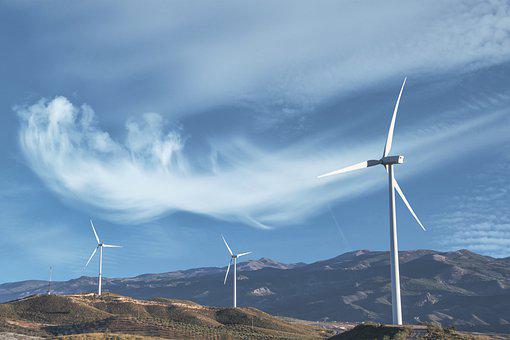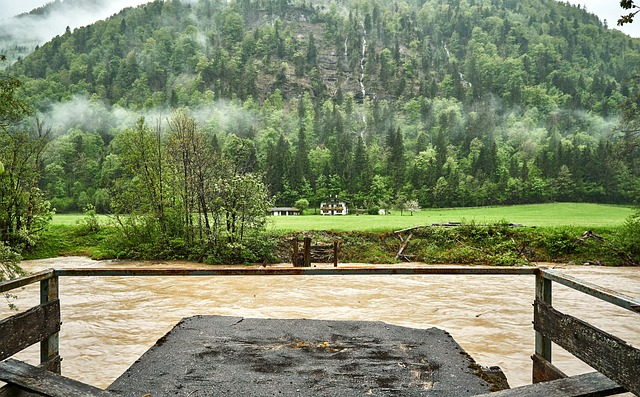Introduction
Wind energy is a transformed form of solar energy that is created in its core by the nuclear fusion of hydrogen (H) into helium (He). The H-He fusion reaction generates heat, and electromagnetic radiation pours out from the sun in all directions into space. Despite the fact that just a small percentage of solar radiation gets collected by the earth, it provides nearly all of the planet’s energy needs. Wind energy is a mainstream energy source for fresh power generation and a significant player in the global energy market. Wind energy may be divided into two categories: land wind and offshore wind. Land wind may be divided into two types: “small wind” or “distributed wind,” and “utility-scale” wind.
You may also like: Renewable Alternative Energy Resources – Advantages and Disadvantages
Uses of Wind Energy
-
Electricity generation:
Wind turbines come in a variety of sizes and shapes. They are commercially accessible for the production of power.
-
Vehicles that are powered
Wind turbines are the primary proponents for generating power, which is then utilized to power the turbines and aid in the propulsion of motorized vehicles. The wind energy created by the movement of the turbine aids in the conversion of mechanical energy via the various engine belts and rotators.
-
Sports involving the wind
Wind sports are sports that can be related to the use of wind energy. Wind sports use a parafoil, which is shaped like a ski or boat. The boats may function on the surfaces of bodies of water such as ice rings, oceans, and seas. Wind sports rely primarily on the speed of the winds, which are essential in carrying goods from one location to another.
-
Transportation
Transportation is another application for wind energy. Wind energy has been used for sailing by civilizations for thousands of years. Researchers think that sailing has existed in some form since at least 5000 BC.
-
For Water Pumping
You may be unaware that wind energy may also be utilized to pump water using a wind pump. Wind pumps resemble regular windmills, except instead of milling grain, they can pump water.
Also check out: What Are Renewable Energy Sources? – Types of Green Energy
Advantages of Wind Energy
-
Wind energy generates employment
Thousands of long-term, high-paying employments are created by wind energy development in industries such as wind turbine component manufacture, building and installation, maintenance and operations, legal and marketing services, transportation and logistics services, and more.
-
Wind turbines don’t need any water
Most electric power plants require water to function, however creating energy from wind does not.
-
Wind energy is environmentally friendly
Wind turbine electricity does not damage the water we drink or the air we breathe, therefore wind energy equals reduced pollution, acid rain, and greenhouse gas emissions.
-
Low operating costs
Because there are no related fuel expenditures, wind energy systems offer cheap operational costs.
-
Wind energy is an infinitely renewable energy source:
Wind energy is abundant and easily accessible, and harnessing its power does not deplete our natural resources. Wind energy is an endless and potentially limitless source of energy.
Also read: Is Transition To Clean Energy Crucial For Our Survival?
Disadvantages of Wind Energy
-
The increasing cost of electricity
Wind power installations are often located far from areas where there is a high demand for electricity. Transmission from such locations raises the cost of power.
-
Threat to wildlife
It may endanger animals. When birds fly into turbines, they are killed or damaged.
-
Noise Pollution
Wind turbines are commonly blamed for noise pollution. Wind turbines produce a sound that can range between 50 and 60 decibels, and if you have to install one close to your house, it will be even louder.
-
Low Efficiency
Wind turbines have an extremely low average efficiency when compared to fossil fuel power facilities. We could need a lot of wind turbines to have the same effect.
-
Wind turbines pollute the environment visually
Another disadvantage of wind turbines is that they cause visual pollution. Although many individuals appreciate the aesthetic of wind turbines, many others dislike them, perceiving them as a blemish on the landscape.
Conclusion
As a result, wind energy has been termed one of the most valuable and vital renewable energy resources. The energy source can then be converted into electrical energy and utilized to generate power in various sorts of machines. Despite of disadvantages it is useful in several ways such as by making a way of employment, with cheap operational cost etc.
You might also like to read: Why We All Should Move to Clean Renewable Energy
We hope you liked this post! Please comment below if you have any suggestions, comments or feedbacks! We at #envpk love hearing from readers! Thanks




